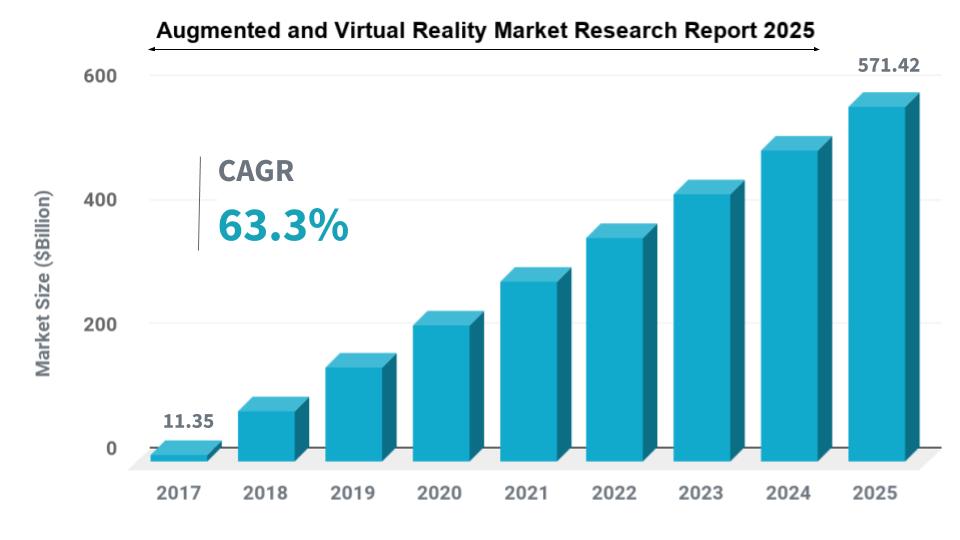
Introduction: Why VR Startups Are Poised for Explosive Growth in 2025
How much does it cost to build a VR startup in 2025?
Typically between $100,000–$500,000 for a lean MVP, depending on scope and platform.
Virtual Reality (VR) has officially crossed the threshold from futuristic fantasy to mainstream technology. In 2025, the industry is experiencing its second major boom, fueled by AI integration, spatial computing, and enterprise adoption. For founders dreaming of creating the next big thing, Building a VR Startup in 2025 offers enormous potential but only if approached strategically.
The VR ecosystem now spans beyond gaming into education, training, healthcare, real estate, and retail. Global VR revenue is projected to surpass $80 billion by 2027, signaling an industry ripe for innovative disruption. However, with opportunity comes fierce competition, meaning only startups with the right business models, tools, and growth strategies will thrive.
Understanding the 2025 VR Market Landscape

What programming languages are best for VR development?
C#, C++, and Python (for AI integration) remain top choices.
The modern VR industry is defined by two words: maturity and momentum. Unlike the speculative bubble of 2016–2019, the 2025 market has real customers, data, and infrastructure.
Key Industry Drivers Behind VR Adoption
- AI and Machine Learning Integration – Personalized VR experiences driven by user behavior.
- Spatial Computing & Mixed Reality Devices – Apple Vision Pro and Meta Quest 4 are reshaping interaction paradigms.
- Enterprise Use Cases – Training, design, and simulation are now billion-dollar segments.
Major Challenges VR Startups Face in 2025
Despite the optimism, founders face real obstacles:
- High Development Costs – Creating immersive experiences is expensive and time-intensive.
- Hardware Limitations – Device fragmentation still challenges user adoption.
- User Retention – Many VR apps fail to deliver lasting engagement beyond novelty.
To win in 2025, startups must focus on sustainable differentiation, user-centric design, and lean innovation.
Read about top VR game development companies that can help startups
Discover partners for prototyping, production & post-launch support.
Laying the Foundation: Building a Solid VR Business Model
Is VR oversaturated in 2025?
No. While gaming is crowded, enterprise and healthcare niches are still wide open.
Before writing a single line of code, founders should define who they serve, what problem they solve, and how they’ll monetize it.
Choosing a Profitable VR Niche
The most successful VR startups focus narrowly. In 2025, the most lucrative verticals include:
- VR Gaming (still dominant, with hyper-real multiplayer worlds)
- VR Education & Training (corporate and academic markets)
- Healthcare & Therapy Applications (PTSD, rehabilitation, and pain management)
- Enterprise Collaboration Tools (remote work and design visualization)
Revenue Models That Work (and Those That Don’t)
Successful startups are adopting hybrid models:
- Subscription SaaS (B2B) for enterprise training.
- Freemium-to-Premium for consumer VR platforms.
- Licensing IP or white-labeling technology to partners.
What’s dead: relying solely on one-time app purchases—the market now demands continuous engagement and value delivery.
Proven Strategies for Building a VR Startup in 2025
How can startups attract investors?
By demonstrating traction through early user growth, strong retention, and clear revenue models.
The secret to success lies in agility, community, and data-driven decisions.
Lean Development and Rapid Prototyping
Speed matters. Use tools like Unity XR Interaction Toolkit and OpenXR to create MVPs within weeks, not months. Early testing with real users helps refine core mechanics before scaling.
Securing Smart Funding in a Crowded Market
Traditional venture capital is competitive, but niche accelerators like Boost VC and crowdfunding platforms like Kickstarter remain effective for validation. Seek strategic investors—not just capital, but industry expertise.
User Experience (UX) Design: The Make-or-Break Factor
In VR, bad UX is deadly. Focus on intuitive interaction, low motion sickness, and emotional engagement. User testing should happen early and often.
Tech Stack and Tools for Modern VR Startups
What are the biggest mistakes VR founders make?
Overbuilding, poor UX, and lack of focus on a specific user problem.
A solid tech foundation accelerates innovation.
Top Development Platforms (Unity, Unreal, etc.)
- Unity: Best for indie and mobile-focused startups.
- Unreal Engine 5: Ideal for photorealistic enterprise and gaming experiences.
- Godot XR: Open-source alternative with rising adoption in 2025.
Emerging Tools and APIs Transforming VR
- OpenXR: Enables cross-platform development.
- AI-assisted development tools for animation and world-building.
- Hand-tracking APIs for natural user interactions.
What’s Dead: Outdated Tactics VR Founders Should Avoid
- Building without market validation.
- Ignoring cross-platform optimization.
- Relying solely on hardware novelty.
- Overfunding before proving product-market fit.
Future Trends Shaping VR Startups Beyond 2025
The next frontier is AI-powered immersion. Expect to see:
- Personalized virtual worlds that adapt in real-time.
- Immersive commerce, where users try and buy in VR.
- Digital twins and spatial AI shaping smart cities.
Forward-thinking founders are already aligning their products with these megatrends.
Real-World Case Studies: VR Startups That Nailed It
- Osso VR – Revolutionizing surgical training.
- ENGAGE XR – Redefining virtual meetings.
- Beat Saber – Proving longevity in VR gaming through simplicity and fun.
Each succeeded by focusing on experience over hype and iterating relentlessly.
Conclusion: The Road Ahead for VR Entrepreneurs
Building a VR Startup in 2025 is both a massive challenge and a once-in-a-generation opportunity. The winners will be those who blend technical innovation with business discipline, who build for people, not hype, and who embrace adaptability as their core advantage.
If you start now—with a laser-focused niche, smart tools, and the right strategy—you’ll be building not just a company, but a cornerstone of the next digital revolution.
External Resource:
Learn more about VR market projections at Statista’s VR Industry Report
 View on Google Maps
View on Google Maps






